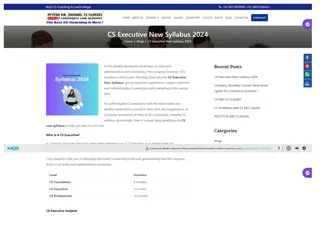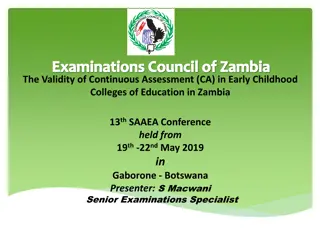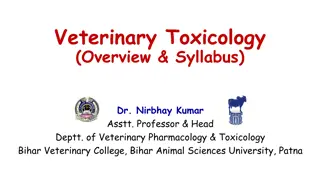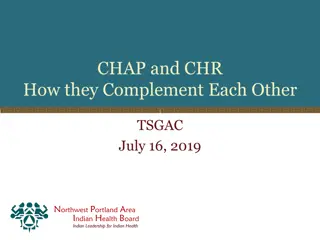
Organic Chemistry Principles for Chemical Engineering Students
Dive into the principles of organic chemistry for chemical engineering students with topics covering carbon compounds, chemical bonds, alkane, alkenes, alkynes, aromatic compounds, alkyl halides, and more. Understand IUPAC nomenclature, reaction mechanisms, synthesis, and applications of organic compounds in various industries. Assess your learning through exams, quizzes, and presentations as you grasp the fundamentals and practical uses of organic chemistry.
Download Presentation

Please find below an Image/Link to download the presentation.
The content on the website is provided AS IS for your information and personal use only. It may not be sold, licensed, or shared on other websites without obtaining consent from the author. If you encounter any issues during the download, it is possible that the publisher has removed the file from their server.
You are allowed to download the files provided on this website for personal or commercial use, subject to the condition that they are used lawfully. All files are the property of their respective owners.
The content on the website is provided AS IS for your information and personal use only. It may not be sold, licensed, or shared on other websites without obtaining consent from the author.
E N D
Presentation Transcript
PRINCIPLES OF ORGANIC CHEMISTRY I FOR CHEMICAL ENGINEERING STUDENTS, COLLEGE OF ENGINEERING CHEM 244 Dr. Sultan Almadhhi Assistant Professor of Organic Chemistry King Saud University
Topics to be Covered o Introduction (Carbon Compounds, Chemical Bonds (ionic and Covalent), Atomic and Molecular orbitals, Hybridization, Polarity and Inductive effect). o Alkanes and Cycloalkanes (Alkyl groups, IUPAC nomenclature, Physical properties, Sources off, Synthesis. Reactions (Combustion, Configuration, cyclohexanes. o Alkenes, Alkynes and Conjugated Dienes (IUPAC nomenclature, Physical (Dehydrohalogenation, from vicinal dihalides, Dehydration of alcohols). Reactions (Acidity of terminal alkynes, Addition reactions (Reduction, Halogenation, Addition of HX Markovnikov rule, Carbonium ions and their stability, Reaction mechanism), Addition in the presence of peroxides, Hydration, Halohydrin formation), Oxidation of Alkenes (KMnO4, Peroxides and Ozonolysis). (Allyl radical and stability, Allyl cation, 1,3- Butadiene - electron delocalization, Resonance and the Stability of conjugated dienes, 1,4-Addition and 1,4-Cycloaddition reactions of diene). Halogenation, Ring opening). properties, Synthesis 2
Topics to be Covered o Aromatic Compound (Aromaic character, Hukel rule, Nomenlature, Electrophilic substitution reactions (Alkylation, Acylation, Halogenatio, Sulphonation, Nitration; reaction mechanism), Side chain halogenation and oxidation, Reactivity and Orientation in substituted benzene, Polynuclear aromatics). o Alkyl halides (nomenclature, synthesis and reactions, optical isomerism (SN1, SN2, E1 and E2 reactions)). 3
References o Organic chemistry: A short course by I Harold Hart, David J. Hart and Leslie E. Craine, Houghton Mifflin Company, USA. o Elements of Organic Chemistry (second edition) is written by Isaak Zimmerman and Henry Zimmerman and published by Macmillan Publishing Co., Inc. New York in 1983. : - /. . - o 4
Schedule of Assessment Tasks During the Semester No. Assessment Task Points 1 Frist Midterm Exam 15 2 Second Midterm Exam 15 3 5 Quizes 15 4 Presentation 15 5 Final Exam 40 Total 100 5
Course Objectives o Name organic compounds using IUPAC naming system, their occurrence in nature, physical properties. o Identify, classify and understand physical and chemical properties of the major functional groups. o Understand the basic organic reaction for preparation of common functional groups. o Understand the reaction of functional groups and families of organic compounds. o The practical uses of organic compounds as drugs, food additives, pesticides, plastics, and other products, as well as their occurrence in nature. 6
Course Learning Outcomes 1 Knowledge 1.1 To recognize structures of organic compounds. To memorize naming, constitutional isomer, physical properties and reactions. 1.2 2 Skills To differentiate between ionic and covalent bonds in chemical compounds. 2.1 2.2 To recognize the IUPAC nomenclature of organic chemical compounds. To differentiate between aromatic and non-aromatic compounds according to Hukel s rule. 2.3 To predict the type of nucleophilic or electrophilic substitutions in organic reactions. 2.4 7
Course Learning Outcomes 3 Values 3.1 Work independently and as a part of a team during class session. 3.2 Utilizing university electronic resources of learning. 8



















